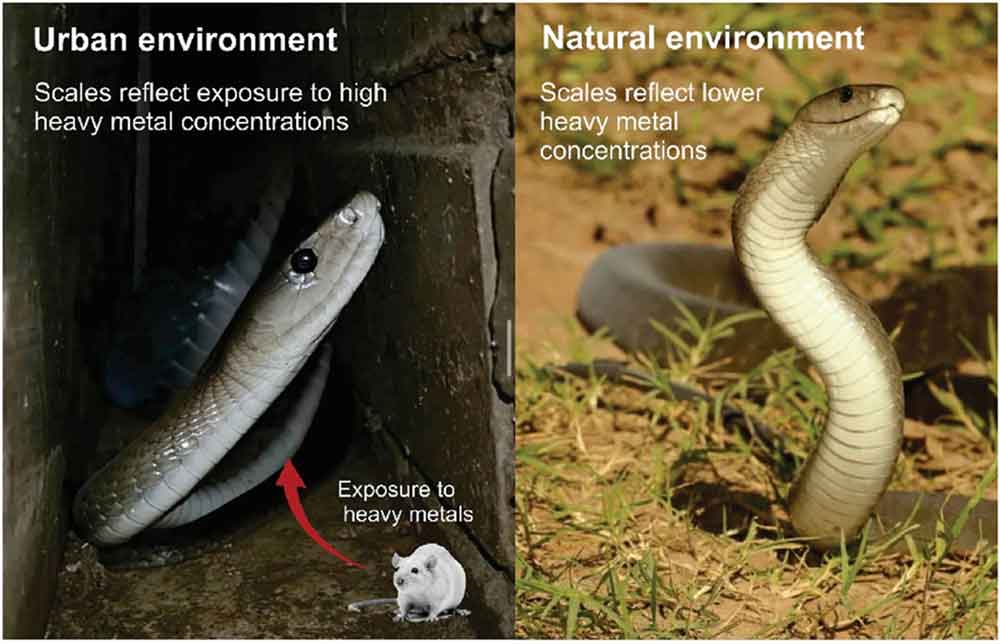The Black Mamba: A Unique Bioindicator for heavy Metal Pollution
the black mamba (Dendroaspis polylepis) is a highly venomous snake found in Africa. While its name may suggest a dark color, it is actually named after the black color of its mouth. However, recent research has revealed that this snake can also serve as an vital bioindicator for heavy metal pollution.
In a study published in Environmental Pollution, scientists from the University of the Witwatersrand in Johannesburg, South Africa discovered that black mambas can accumulate heavy metals such as arsenic, lead, cadmium and mercury from their prey. This makes them valuable indicators of environmental pollution.

Black mambas in urban environments had higher concentrations of heavy metals than those found in natural environments. Image via Prof. Marc Humphries, et.al
“Black Mambas are commonly found in the Durban area and often reside in the same location for years,” explains Professor Graham Alexander, a herpetologist at Wits University. “If their body tissues contain high levels of heavy metals, it is indeed a strong indication that the local surroundings is under threat.”
The researchers collected scale clippings from live snakes living in domestic, commercial and industrial areas and also from those killed on roads or due to human-snake conflict. Their findings showed that black mambas living in industrial and commercial areas had significantly higher concentrations of heavy metals compared to those living in nature reserves and other clean environments.
The World’s Deadliest Snakes
“We found a clear association between land use and heavy metal exposure in black mambas,” says lead researcher Marc Humphries. “snakes living in connected green spaces around the city generally had significantly lower heavy metal concentrations in their scales compared to those in more industrial and commercial areas.”
The researchers also note that Durban’s Metropolitan Open Space System (D’MOSS) network, which consists of clean and open spaces, produced snakes with lower levels of heavy metals.
“The exciting thing is that we can obtain this information from a speedy, harmless scale clipping,” adds Humphries. ”It’s safe for the snake and could be used in cities across Africa where snakes are already being relocated from homes and businesses.”
The complete paper, titled “Black mambas (Dendroaspis polylepis) as novel bioindicators of urban heavy metal pollution,” can be accessed on the Environmental Pollution website.


This is such a unique and innovative approach to tracking pollution levels! 🐍